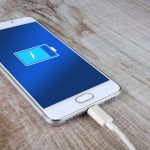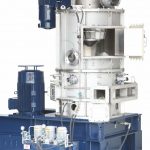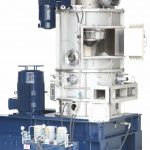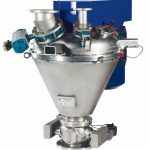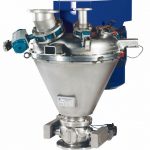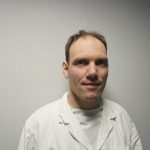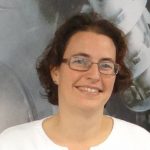Thanks to the positive outlook for electric vehicles in combination with continued high demand for consumer electronics and portables, the global battery market is booming. But battery manufacturers are under intense pressure. On the one hand, the end users of batteries want faster charging, a longer-lasting charge and a longer useful life of the battery overall. Then on the other hand, there are the OEMs who want batteries to be smaller and more compact with an increased energy density.
As one of the leading powder processing companies, Hosokawa Micron is ideally placed to help battery manufacturers tackle these challenges and gain a competitive edge. Together with its sister companies that make up the worldwide Hosokawa Group, it provides high-quality equipment for use in numerous steps of the battery production process: from drying, milling and classification, to rounding, ultra-fine milling, mixing, coating and containment – both for mass production and R&D.
High flexibility during drying
The first step where Hosokawa Micron machines can be used is in the process to dry and mill the precursor materials such as nickel, manganese and cobalt oxides for the cathode. The DMR flash dryer is ideal for the continuous drying of the active material. It can achieve end moistures of below 1 %, and unlike other dryers it is flexible enough to handle both slurries and filter cakes.
A classifier at the top of the dryer ensures that only the particles with the correct moisture will pass to the product collector. The dispersion disc inside the drying chamber breaks down the larger particles into smaller ones. This process increases the surface area of the agglomerates, making it easier to evaporate the liquid and therefore increasing the drying efficiency. This saves time and energy for manufacturers, plus its small footprint saves space in their factories.
A continuous drying process is usually the best solution for most battery manufacturers, but if even lower parts per million (ppm) of moisture levels need to be achie-ved, or if the required capacity is small, the company can offer batch dryers such as the Nauta vacuum dryer. And in the case of difficult volatiles, the conical paddle dryer (CPD) allows to combine temperatures of up to 325 °C with full vacuum for extremely low ppm levels.
Ultra-fine milling
For optimum battery performance, it is important for the active materials in batteries to have well-defined particle size distribution and small particles. Ultra-fine milling of the active powders creates a smaller particle with a larger surface area. The result is a higher usable capacity, faster recharging and longer useful life.
Through its sister companies in Germany and the USA, Hosokawa Micron can supply several types of mills. The most common milling solutions for the battery industry are the dedicated impact air classifying mill (ACM) and the fluidised bed jet mill (AFG). Both of which can achieve extremely fine and narrow particle size distribution.
As well as handling cathode materials such as lithium cobalt oxide or manganese-based precursors, the mills can also be used for anode materials (graphite and silicon).
Spheroidisation of graphite
Besides this, Hosokawa offers opportunities for spheroidising graphite. Graphite has a naturally flaky structure and low bulk density, both of which decrease the capacity of a battery. Spheroidising the graphite increases its bulk density and wettability, enabling you to pack more material into the same volume for even better battery performance. Natural graphite is cheaper to source, but synthetic graphite is already more spherical, so it requires less energy
to round it off during the milling process, ultimately saving time and costs.
Hosokawa has developed machines for rounding both synthetic graphite and natural graphite. For spheroidising synthetic graphite, the classifier mill Zirkoplex ZPS is the machine of choice. Natural graphite can be rounded with the Alpine Particle Rounder APR. This machine was specifically developed for this task and introduces a new process. The process makes it possible to use the graphite more efficiently, while at the same time requiring fewer machines than before. This saves space and reduces maintenance and energy costs.
All of the mills can have ceramic wear protection. This minimises contamination during the milling process and therefore maintains the highest possible product purity for battery manufacturers.
High-shear coating
However, reducing the particle size in the precursors to create a bigger surface area reduces their flow properties and causes ‘sticking’. For the precise mixing of fine particles Hosokawa therefore advises most battery manufacturers to use the high-intensity – or ‘high-shear’ – Nobilta or Cyclomix mixers in the case of batch mixing, or the Modulomix for continuous mixing. These mixers not only achieve a homogeneous mixture of the materials, but also ensure a strong coating of carbon black and binders around the precursor materials to further improve the conductivity.
For even better battery performance, me-chanical fusion in the ultra-high-shear Mechanofusion mixer actually embeds the particles of the coating in the host particle. Using more shear is always a trade-off; it’s not suitable for all products, it reduces the volume that can be handled, plus it increases energy consumption. Therefore, it’s
a matter of finding the optimum level of shear depending on each user’s requirements. All mixers can be supplied with a wear-resistant coating as an optional extra if manufacturers want optimum purity of the active materials.
If a high shear force is not required, the proven Nauta mixers are used. This gentle but highly efficient conical mixer can be used for batch homogenisation, for example, or lot adjustment after milling, and as an agitated live hopper for feeding of the milling or continuous drying systems.
Large test centres
Due to the complexity of battery production, numerous tests are often necessary until the right solution is found. This is possible in the 3000 m2 test centre at Hosokawa Alpine in Germany and the 2000 m2 test centre at Hosokawa Micron in Doetinchem in the Netherlands.
All machines are certified in line with strict European standards including Atex and CE. Depending on the products and the required occupational exposure banding (OEB) level, a downflow booth for the containment of discharge, or split butterfly valves are offered. This is also relevant for solid-state batteries, which have to be produced in extremely dry air conditions. And if OEB level 5 is necessary, an isolator is available.
Hosokawa Micron B.V., Doetinchem, Netherlands



